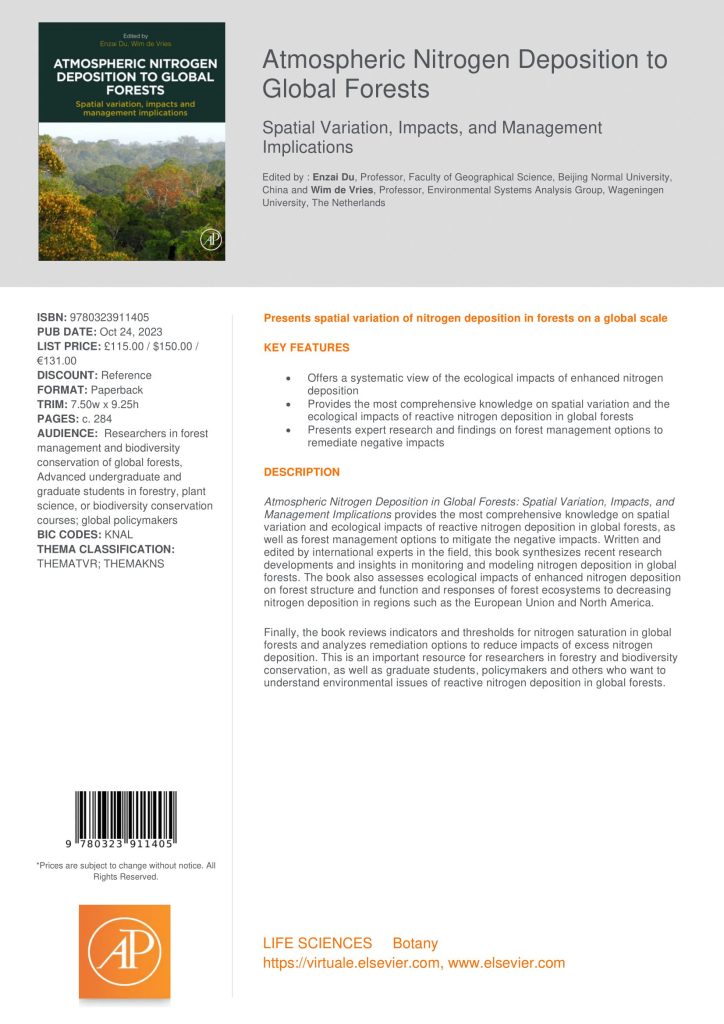28th November 2023, 14:00 (CET): Fourth Webinar: Responses of forest ecosystems to nitrogen deposition in the United Kingdom
The CLEANFOREST webinar series is hosted by the COST Action’s Young Researchers community for all interested researchers and practitioners during the second and fourth week of every month.
For the next event in the series we will be joined by Elena Vanguelova (Forest Research, UK) to hear about her research. Most of UK’s woodland exceeds the critical nitrogen (N) loads. We reviewed current evidence from forest monitoring and experimental research on the measured impacts of N deposition on UK’s forests. Forest monitoring (>20 years) suggest a significant decline in nitrate deposition in some lowland areas and in both ammonium and nitrate deposition in upland forests but no change in areas with high N deposition and near N pollution sources. Some ground flora response to decline or enrichment of N deposition has been identified, but forest age, canopy management, previous land use and edge effect need to be considered. Soil surveys suggest that UK’s forest soils have accumulated N under conifers which may be released during forestry operations and pose a risk to water’s quality and GHG emissions. Tree species and soil type play a vital role in the response of the forest to N inputs. Forest edge effect introduce both high spatial variability in N inputs and forest ecosystem responses to N deposition. Strong relationships between tree N uptake, litterfall, growth and insect damage have been related to N deposition. The generation of N through insect infestations of the forest canopy have been quantified and canopy N transformations demonstrated through stable isotopes studies. Dry and wet N deposition was found to be a significant predisposition factor for Acute Oak Decline. Clear thresholds of N deposition for ectomycorrhizal community’s changes have been determined. Nitrogen input needs to be included in predictive modelling of biodiversity and tree health in forest ecosystems.
This review of evidence for the UK was recently published as a Chapter (11) in the book of Du, E., de Vries, W. (eds.) 2023. Atmospheric Nitrogen Deposition to Global Forests: Spatial Variation, Impacts and Management Implications. Academic Press.
The webinar will be hosted on MS Teams. Please register in advance here.
For further information, contact:
- Charlotte Angove charlotte.angove@luke.fi
- Andrei Popa popa.andrei.dorna@gmail.com

